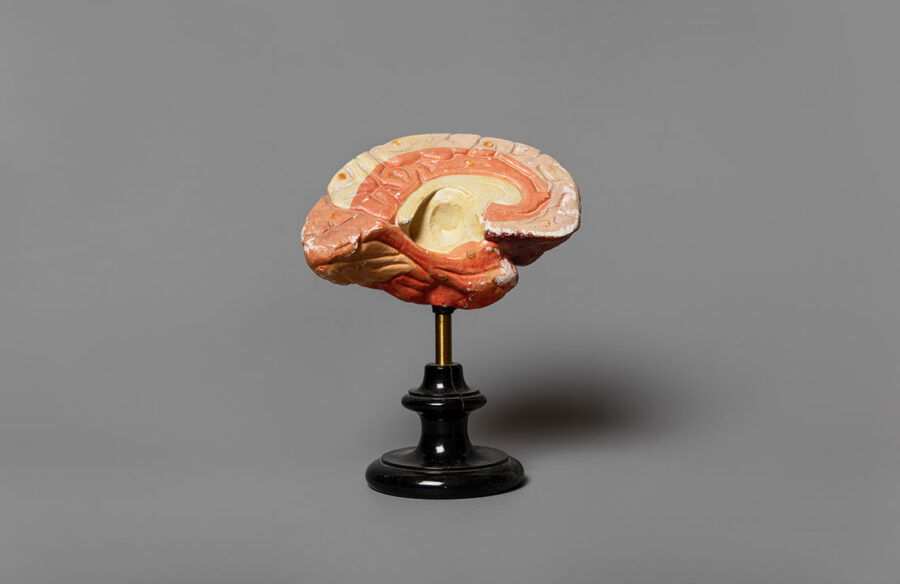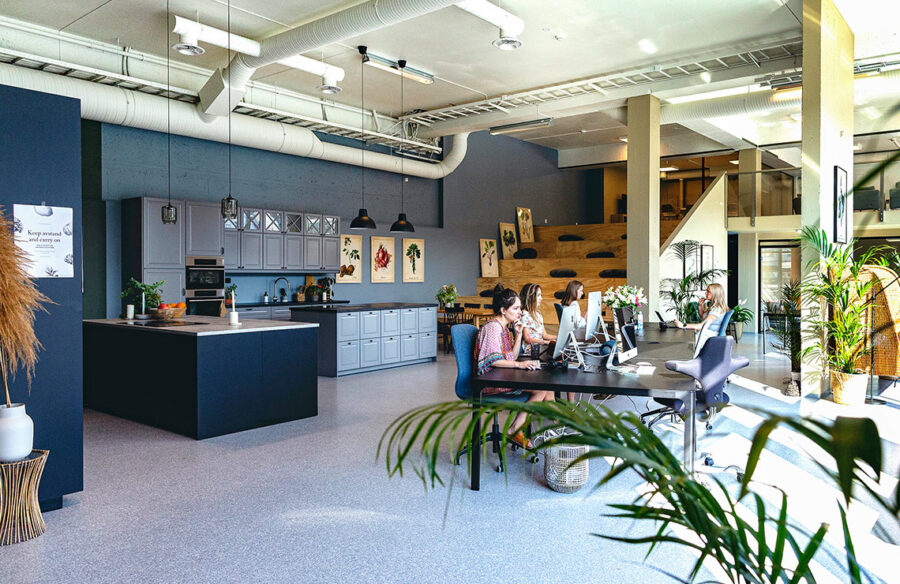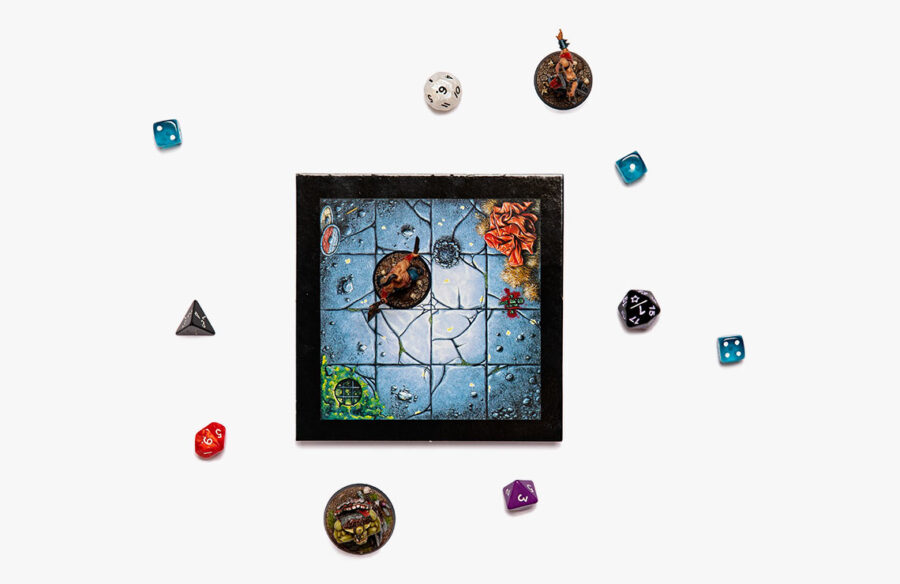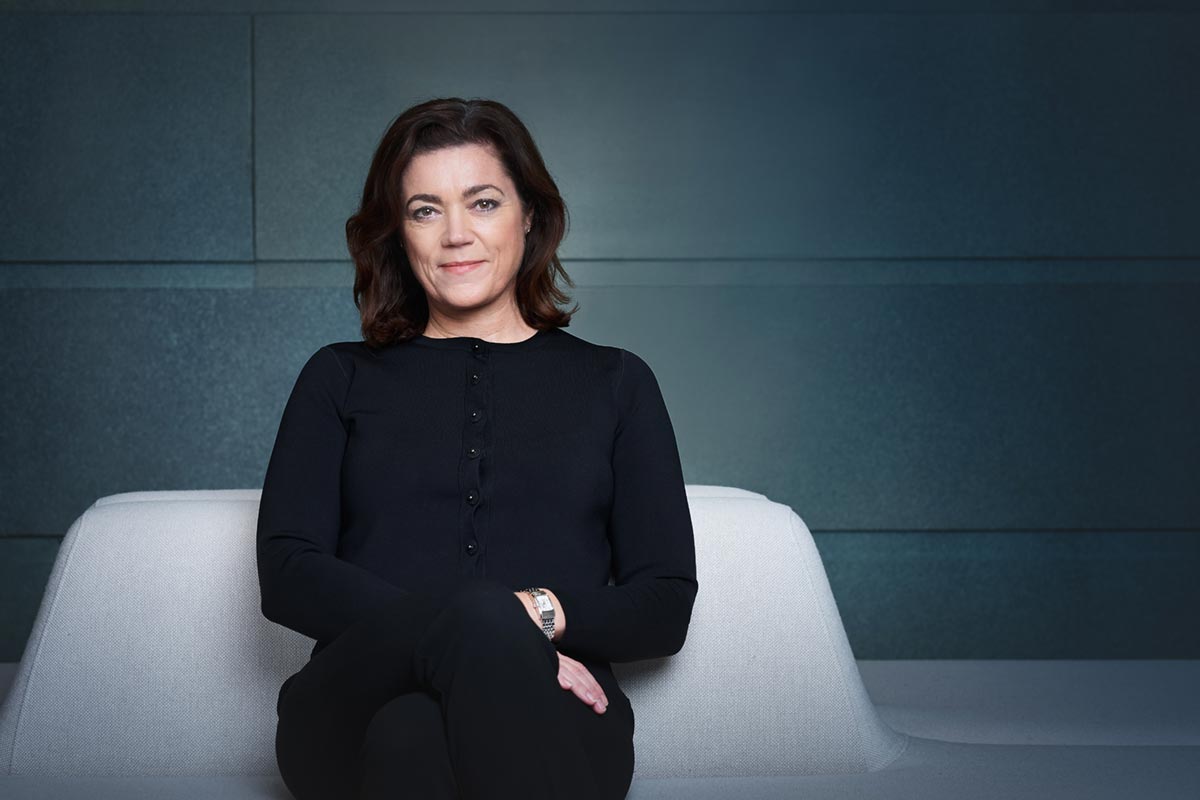Reading minds and saving lives

Reading minds and saving lives
We are entering a new era of medicine, where AI will revolutionise healthcare and treatment. It might also lead to more empathetic doctors.
Pancho was 20 years old when he was paralysed and lost his ability to speak. He was a Mexican-born amateur football player and a field worker in the California vineyards, until one summer Sunday after a match, he was in a car crash. After surgery, he suffered a stroke and his life changed.
When he woke up from his coma, he tried to move. He couldn’t. He tried to talk and discovered he couldn’t form a word. Then he started to cry, but he couldn’t make a sound.
At that point he wished he hadn’t come back from the coma at all, he recently told a New York Times reporter. Pancho felt like his life was over.
Today Pancho can speak again
Fifteen years later, his life would change again, when a group of American scientists implanted a chip with 128 electrodes into his brain, plugged a cable into his skull and trained deep learning software to read his mind. Today, Pancho can speak again. When he thinks of words, the software decodes the signals from his brain and his words are spoken in a gravelly, synthetic voice.
Interpreting his brain signals and translating them into words is only possible thanks to an artificial neural network interacting with Pancho’s organic one. The AI software was trained on his thoughts during 50 sessions in which Pancho was trying to speak words, until it recognised the patterns of brain signals that corresponded to certain words. (Thanks to his new ability to speak, the patient has expressed that Pancho is the nickname he prefers, to protect his privacy.)
Pancho’s AI-assisted rehabilitation may seem like the stuff of science fiction. It is all the more remarkable for being real, and part of an AI revolution in medicine and health care.
The AI research field was conceived at Dartmouth College in 1956, a year when James Dean ruled the silver screen and Elvis Presley had his first number one hit, Heartbreak Hotel. Since then, AI has had its ups and downs, exaggerated expectations followed by troughs of disillusionment. The term “AI winter” was coined specifically to denote periods of disenchantment, when investment in AI dried out and the pace of progress slowed.
Notably, AI systems have defeated humans at games like go, Dota and Jeopardy.
Since Pancho’s accident in 2003, however, AI has made great strides thanks to the advent of artificial neural networks. The theory behind it had been established decades earlier, the idea that software networks mimicking the arrangement of neurons in the human brain would provide an important step in the evolution of thinking computers. But it wasn’t until the 2000s that it bore fruit, when processor speeds, storage capacity and data availability finally reached a tipping point in which it became feasible to train large neural networks on vast amounts of data, quickly leading to improvements in image recognition, automatic translation, and other domains.
Notably, AI systems have defeated humans at games like go, Dota and Jeopardy. Social media corporations have used machine learning to find the best methods to keep us refreshing our feeds in endless loops of distraction, and self-driving cars are inching ever closer to arriving on our streets. But only in the last few years has medical AI started taking off in a big way. And if you think hooking a cable to Pancho’s skull and reading his mind is something of a miracle, well, that’s just the tip of the iceberg.
Alphabet’s AI research company Deepmind is perhaps best known to the public for creating Alphago, the go-playing AI that runs circles around human go masters. But their work on Alphago has turned out to be useful in another domain as well. In 2020, Deepmind entered their tweaked AI, Alphafold, in a contest to solve the problem of protein folding. To nobody’s surprise, Alphafold crushed the competition.
Mapped out proteins of the Corona virus
Biologists have hailed Alphafold’s success as the first time AI has solved a significant scientific problem. An improved understanding of protein folding is already significantly reducing development timelines for drugs and vaccines. For instance, during the Covid-19 pandemic, Alphafold’s predictions were used to map out the proteins of the virus.
Currently, AlphaFold is being used to help develop new drugs for tropical diseases. It has already helped scientists find a safe drug for treating sleeping sickness, replacing a previous drug that is highly toxic.
Other areas where AI is currently being used include:
Medical imaging
Interpretation of visual data is key in fields such as dermatology and radiology, and fertile ground for machine learning algorithms. Tech companies, hospitals and universities around the world have developed machine learning algorithms that surpass human experts at detection of various skin conditions, cancers and other abnormalities. While human specialists can be highly skilled at examining rashes and reading x-ray plates, they require years of training and they are a scarce resource. AI speeds up the process, makes these skills more accessible and can, in some cases, detect anomalies that human doctors cannot.
Health records analysis
Electronic health records create new opportunities for machine learning algorithms to find previously unknown patterns in symptoms, diagnoses, medications and treatment effects. Researchers in Uruguay have developed a system that analyses the text a doctor enters in a health record and pulls up similar cases that may contain valuable insights. Spanish researchers have created a system that analyses a patient’s health record, and predicts risks for diseases based on their historical data along with data from their family’s health records. As health record data grows at a rapid pace, human physicians cannot keep up, but they can learn from the analysis performed by AI systems.
Diagnosis
Symbolic AI was first tailored to diagnose disease in the 1970s, using rules-based decision trees to create “expert systems” to assist professionals in their decision making. Recent methods instead rely on artificial neural networks and have proven themselves useful in diagnosing a vast range of diseases, relying on techniques such as image recognition, symptom evaluation and natural language processing.
Disease control
On December 31, 2019, the Canadian medtech company Blue Dot alerted its clients about a new flu-like virus spreading in Wuhan, China. They were a week ahead of the World Health Organisation and the Centers for Disease Control, thanks to their use of machine learning algorithms that were processing 100,000 news items and disease reports in 65 languages every day. AI-supported systems such as the Blue Dot platform can monitor the spread of new diseases, but also predict future trajectory based on data such as travel patterns, hospital admittance, historical data from previous epidemics and mathematical models.
Drug interactions
For patients taking a large number of medications, drug interactions can be potentially harmful as well as hard to track by individual physicians. Spanish and Chinese researchers have shown that machine learning algorithms can scan databases, medical literature and electronic health records and find patterns indicating adverse reactions to drug combinations.
Drug discovery
AI has proven its ability to speed up drug discovery dramatically. It is useful in several ways, such as predicting the 3D structure of target proteins, predicting drug-protein interactions and toxicity risks, designing biospecific drug molecules as well as assessing drug activity. While Deepmind has turned its attention to neglected tropical diseases, British medtec start-up Exscientia and Japanese pharmaceutical firm Sumitomo Dainippon Pharma used AI to create a treatment for obsessive-compulsive disorder. Development took only twelve months (compared to the expected timeline of five years) and the drug is now in human trials. Many other research teams around the world are currently using AI to find new drugs, and Andrew Hopkins, CEO of Exscientia, recently predicted that all new drugs will be created with the help of AI by 2030.
Neural prosthetics
With machine learning, Swiss researchers have trained algorithms to interpret the muscle signals of an amputee, to control a prosthetic hand. The task is complex because muscle signals are noisy and traditional approaches have yielded clumsy results. Machine learning changes the game, and the AI-powered prosthetic is more precise and quicker to react than previous prostheses. Advances in this field are bearing fruit in many research labs and Pancho’s new ability to talk is another example of this approach, called a speech neuroprosthesis.
As Pancho’s example and all the ongoing research demonstrates, we are entering a new era of medicine where machines can read the signals of our bodies, unfold amino acid molecules, replace lost abilities and tailor drugs to the protein structure of specific viruses. There will be disputes over privacy and security, as AI systems crave massive amounts of data to further increase their capabilities. But the technology is so powerful and the stakes are literally life and death. As evidence of AI’s potential continues to grow, odds are that privacy advocates will be fighting a lost cause. After all, no government would prioritise privacy over a cure for cancer or prevention of the next pandemic.
Humans doctors can relate
Will friendly and competent doctors be replaced then, by robodocs with superior diagnostic skills and knowledge of drug interactions? Well, not so fast. If there is one domain where humans are irreplaceable, it’s emotional work. No algorithm will feel genuinely sympathetic about your knee pain. If you want cold, hard facts, go see Dr Alphacure. If you want someone who can relate to your problems, go see someone made of the same stuff as you: flesh, blood, bone.
Sometimes, you see your doctor just to get your prescription renewed. But often, when you go because of a new ailment or injury, you are not only hoping for an intelligent analysis of your symptoms. You want to be taken care of, by someone who understands – from the inside – what it is to have your body starting to fail. You want someone who knows what it is like to wake up at 4 a.m., chest pounding, fearing that your expanding mole might be a mark of death. In time, AI could be taught to simulate these emotional skills. But fake empathy, in the end, is just manipulation.
While human expertise can be replaced by AI, empathy cannot. But as AI unburdens medical practitioners from many of the mechanical tasks of the profession, physicians may have greater opportunity to develop their human-to-human skills. In this way, medtech AI will not only revolutionise drug research, give voice to the speechless and improve diagnostic accuracy. It may just lead to more empathetic doctors, too.
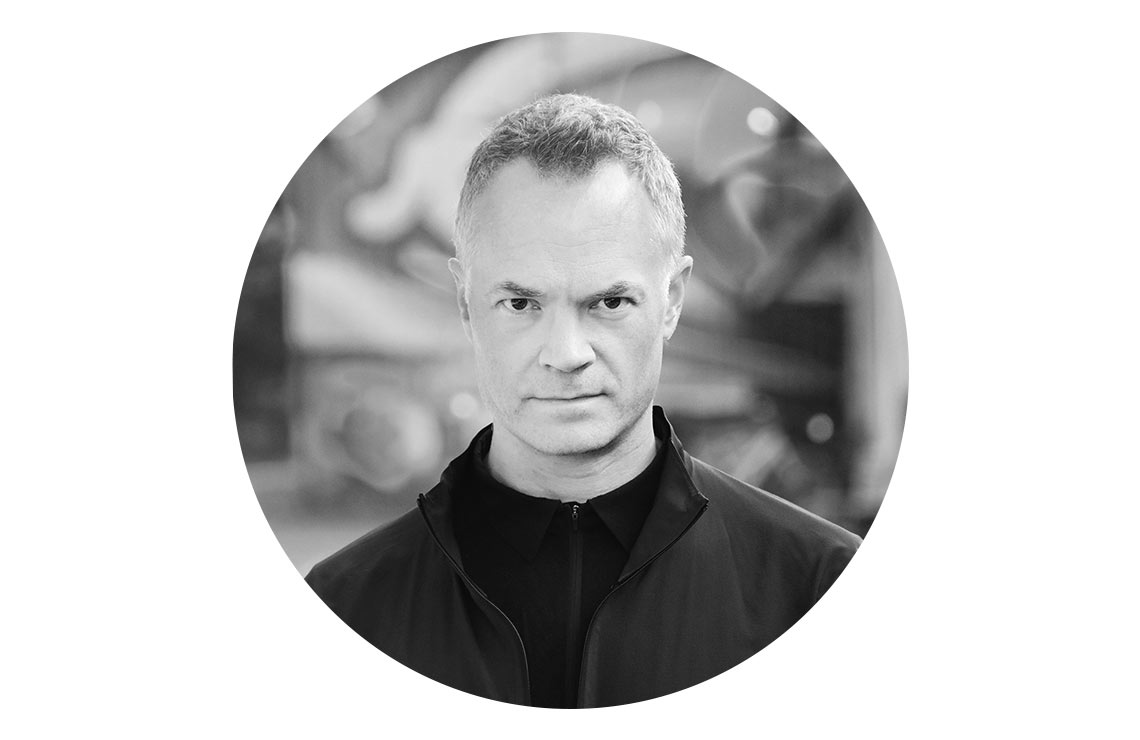
Sam Sundberg
Freelance writer, Svenska Dagbladet
Years in Schibsted: 2.5
A tastier experience
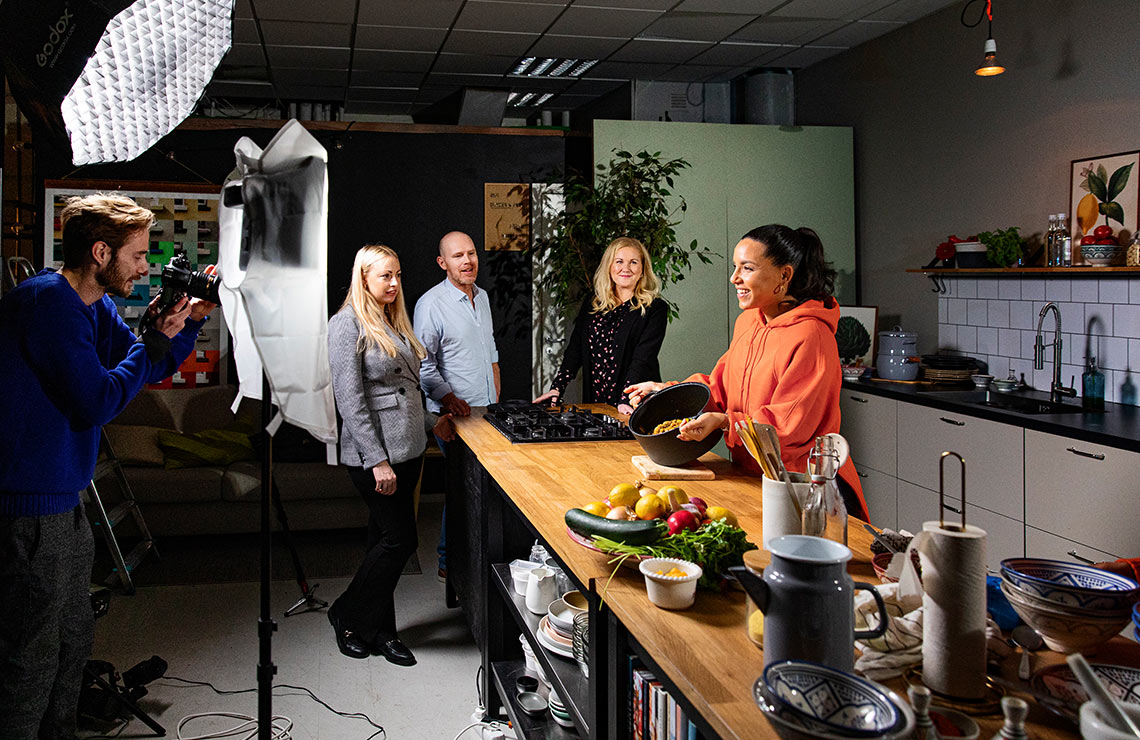
Fredrik Nilsson is taking stills of Markiz Tainton’s show at Godare. Carolina Hermansson and Tobias Lundén from the production team are checking in, together with Karin Widmark, Commercial Manager.
A tastier experience
In just a few years, Schibsted’s food channels, Matkanalen and Godare, have grown to inspire more than a million Scandinavians in the kitchen every month. At the same time, the various cooking show concepts have also reached a new group of advertisers within the food industry – and added a colourful feature segment to Aftonbladet.
In 2015, Øivind Lindøe founded Matkanalen (the food channel) a TV channel purely focused on food. The TV landscape was full of cooking shows but almost all of them were merged with a reality, competition or celebrity element.
“There wasn’t a Scandinavian food channel at the time – that was the starting point”, Lindøe says.
“I have worked with starting up companies before, but never before got such strong and early feedback that I was on the right track as with Matkanalen.”
Øivind Lindøe has a background in marketing and economics. Cooking was not one of his main strengths.
“Luckily, my wife is a great cook, but I can honestly say that I, at that point, was struggling to find an aubergine in the supermarket. And there are probably a lot of other guys out there who have also been able to benefit from Matkanalen.”

About 250 different episodes later, Øivind Lindøe is not the only Norwegian to have improved his cooking. His TV channel now reaches 600,000 monthly viewers.
The largest platform is Snapchat, where Matkanalen has 230,000 subscribers. As not everyone has a TV in the kitchen, a food channel has to find other ways to reach them.
“We aim to be in everybody’s pocket. To be able to watch this on linear TV is just the base, a starting point. We see that people, more and more often, watch replays of our shows on their Ipad or on Snapchat”, he explains. He also recognises that they probably will have to adjust to other markets and platforms going forward.
“There might be new social media platforms popping up that we don’t know about. A visual version of Clubhouse perhaps? Or maybe we will be able to cook the same food as twelve other people, at the same time on a Saturday, and you all have a group room where you work together.” Another goal at Matkanalen is to always keep climate and sustainability close to the end-product.
“Everything we talk about is in line with preserving nature, from using every part of a plant to spreading knowledge about the importance of using local products rather than buying them from Italy, even though they may be great”, says Øivind Lindøe.
“That awareness is important. We are a part of the global trend of steering away from processed food, teaching people to make it themselves.”
Perfect timing
Schibsted bought Matkanalen in September 2019, and then launched its sister channel in Sweden in April the year after. It was named Godare (Tastier), as the name Matkanalen already existed as a Youtube channel run by dairy product giant Arla.
The timing was perfect – millions of Swedes were just about to start working from home, spending more time in their own kitchens. The challenge was that Godare’s commercial manager, Karin Widmark, was one of them. Fresh from Swedish national network TV4, she only had one day in the office before the pandemic forced the team to continue working from home.
“I got the mission to be responsible for a brand-new TV channel from my kitchen table”, Karin Widmark says.
“There were a lot of decisions that needed to be taken all the time, and I had to go off gut feeling and previous experiences. And it’s been fantastic. The best thing I’ve done in my whole life.”
Aiming at people between 25 and 59, with a 50 percent split between men and women, Godare was going to be something completely different compared to the cooking shows Karin had worked with at TV4, where entertainment typically was mixed with cooking.
With Godare, Sweden also got a channel entirely dedicated to food. And Schibsted got a new TV production to fill with advertising offers within the fast-moving consumer goods market, such as supermarket groceries – a category that had been identified as an untapped area for advertising.
About 75 percent of Godare’s content is produced abroad, with big names such as Jamie Oliver. The remaining 25 percent is recorded in Sweden with established influencers or new talent.
A wide range of profiles
In her previous roles, Karin Widmark had come across many food influencers, and she used her contacts to recruit a wide range of profiles to start building the brand.
Fast-forward to a year-and-a-half later, with more than half a million weekly viewers, she needs much less persuasion to recruit cooking personalities these days.
“Now I don’t have to say ‘Hi, I’m Karin Widmark, you might remember me from TV4 when we worked together’. Now most people know what Godare is”, she says.
Karin Widmark thinks Godare became a source of joy for many people working from home during the pandemic.
“I get fantastic feedback daily from people calling me just to say ‘Thank you for having started a channel that I can always keep on, without risking there being talk about corona, statistics, or the importance of alcogel’.”
Not only is it included in the main Swedish TV networks (Comhem and Telia), Godare also merged with Aftonbladet’s food section Mat & Dryck (Food & Drinks) in May 2021, publishing content from the food channel on Scandinavia’s most-visited news site with four million daily visitors. This created something Karin Widmark calls a “360 solution” for customers who want to advertise in linear TV as well as digitally, in packages that are tailor-made for the purpose, goal and budget of the campaign.
Bringing colour to Aftonbladet
“Food and beverage is something that we’ve been focusing on more over the past few years. We want to reach out to that target group, strengthen the mixed sections in Aftonbladet, and deliver on the advertising market’s demand of FMCG”, says Aftonbladet’s publisher Lena K Samuelsson.
One of the next steps is to create a dedicated Godare website. Adjusted to Aftonbladet’s format and language, Godare’s cooking shows have also played an important role in bringing colour to the news site.
“Over the past years we’ve worked hard to incorporate more feature into Aftonbladet’s digital journalism, expression, and business model”, says Lena K Samuelsson.
“Godare has worked very well with our voice and tonality. I usually say that news is our heart, but the mix is our personality. There was a time when we were about to lose our personality, but over the past three to four years, we’ve been working on building it up again.”
Returning to Øivind Lindøe at Matkanalen, it makes him excited to think about the new experiences technology can bring. He believes there could be some new perspectives on the horizon.
“Perhaps we won’t be just labelled TV or online – we’ll simply be working with food and inspiration.”
Godare
Country: Sweden.
Launched: 2020.
Daily viewers on linear TV:
About 180,000.
Weekly viewers on linear TV:
About 500,000.
Divide men/women: 50%.
Target audience: 25–59 years old.
Biggest in age group: 40–60.
Matkanalen
Country: Norway
Launched: 2015
Cooking shows: 250
Weekly viewers on linear TV:
About 200,000
Target audience: ”Foodies in all ages and genders,” according to founder Øivind Lindøe.

Petter Larsson
London stringer at Aftonbladet
Years in Schibsted: 9
Order from the chaos

Photo: Kyrre Lien, VG
Order from the chaos
Life kept going during Corona. In strange, terrifying but also marvelous ways. We have gathered some of the best photos taken by photographers at Schibsted’s newspapers 2021.
Top picture: A bridal party in Beirut having difficulty traversing the city during the improvised demonstrations against the deteriorating living conditions in the country.

H is an undocumented mother living with her two small children in Stockholm. She survives with help from The Church of Saint Clare, where she can get food and money for rent.

Swedish artist Stina Wollter details the loss of her father to Covid-19 as she was finishing the book on the last 30 years of her art career.

This is Vanda Ortega, from one of the worst Covid affected village in the Amazon, where the Brazilian mutation was born. There, the sick retreated into the Amazon and spread the virus throughout the rainforest.

Bjørn Flisram has been fascinated by the power of water since he was a child. Now, at 56, he takes care of his own dam and power plant.
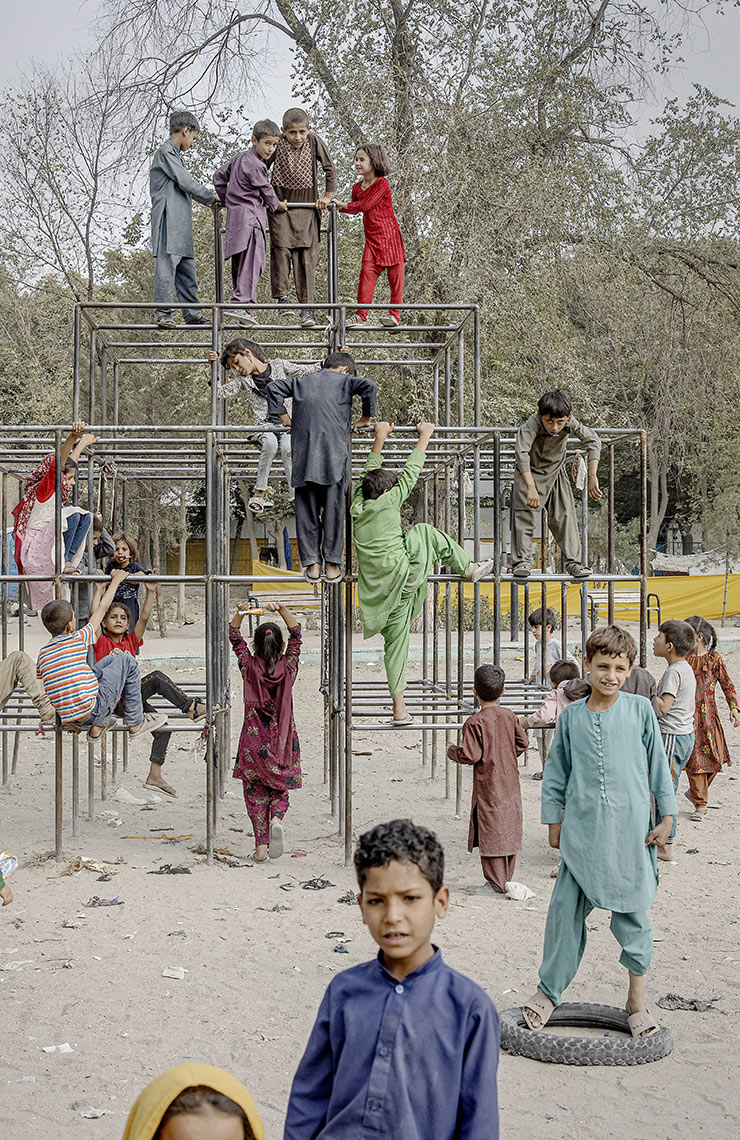
Children, mostly refugees from other parts of Afghanistan, at the playground outside a large refugee camp. Sound of laughter and play. The air is hot. It smells of freshly cooked food and sewage at the same time. In Kabul, people await the next move of the Taliban regime.

Ahmed Umar is said to be the first gay Sudanese man to appear in public. Now, after fleeing to Norway, his art is representing the faceless bodies of queer people in Sudan.
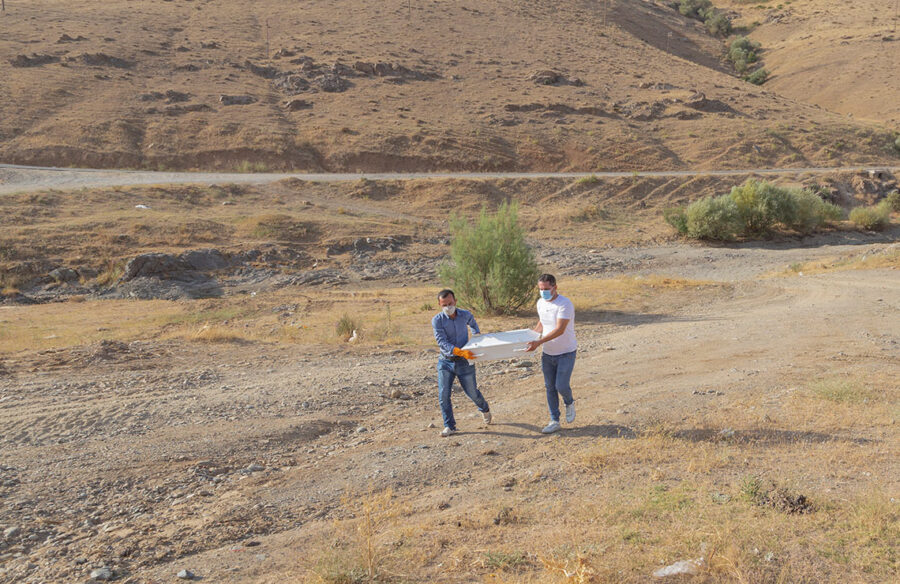
Seventeen-month-old Artin Irannezhad was found on Karmøy after drowning with his family as they fled Iran in hopes of reaching England. Here, his uncle’s friends have just examined the casket on its way home to Sardasht.

Lena Marie Hansen has 24 tattoos, several of them on her face. Most of them symbolise something important to her. “I’m a wandering eye-catcher, but it suits me fine.”
Sustainability makes you future-fit

Sustainability makes you future-fit
The companies that fail to see that sustainability is the next big innovation leap might be out of business sooner rather than later, says Britt Nilsen, Head of Sustainability in Schibsted.
Sustainability will be a prerequisite for doing business in the future. It’s not something that you can choose to relate to or not. Those who think they have a choice in the matter probably lack understanding of what sustainability is, as well as how it represents new business opportunities. The most common misunderstanding is the presumption that sustainability is about climate change only, coupled with the belief that those types of challenges will not hit us for many years to come.
It’s important to understand that sustainability is also about human rights (all people should get the same opportunities, freedom of speech), labour rights (freedom of association, working conditions, health and safety) and anti-corruption (how do we do business in an ethically correct way). It is a lot to take on. You need to work methodically – and perhaps most importantly – sustainability needs to be part of your overall business strategy.
It starts with strategy
In Schibsted, it all starts there – with strategy. We strive to consider and manage our impact in all business decisions and, through our services, empower people to make economic and sustainable choices. One of our overarching goals is that we must make sure that growing our business and having a positive impact on society and the environment is equally important.
We have one strategy, and that strategy must be sustainable. Sustainability is not something that we do on the side whenever it suits us. It’s not about complying with laws and regulations and commitments or giving money to charity. Sustainability is an integrated part of our core business, and we need to treat it as a source of business opportunities. We must continue earning money to stay in business, but we need to do it in a sustainable way by maximising our positive impact on society and the environment.
It’s like putting on your sustainability glasses and looking through them in everything you do, in our day-to-day work and all our business decisions. But to be able to do that you need to do the work. You need to understand how the business and strategy connect to the four sustainability areas mentioned previously and how you can make the most impact, and you also need to check that out with your stakeholders.
15 identified areas
Through a so-called materiality analysis, Schibsted has decided to focus on 15 areas within sustainability. To identify them, we benchmarked ourselves against peers, explored risks and opportunities, evaluated possible impact on the environment and the society, and completed stakeholder dialogues. All the results were then discussed with the executive management team.
In Schibsted it is through our business that we can make the greatest impact. We are not an industrial company and our own greenhouse gas emissions are limited, so reducing them will have a limited effect. But through our marketplaces we facilitate second-hand trade and empower circular and sustainable consumption. This means that our users can cut greenhouse gas emissions through their own circular consumption.
Focus is on our own businesses
The effect in 2020 for Schibsted is that the saved emissions through our marketplaces are 55 times higher than our own emissions. That’s why we should focus most of our resources on our own business and finding new business opportunities, because this is how we make the most impact.
For the 15 sustainability focus areas in Schibsted, we have set long-term ambitions and short-term targets. These are the responsibility of the executive management team. They have included these ambitions and targets in their execution dashboards, which is followed up regularly in progress reviews. That’s the only way to make sure that sustainability is not done on the side but is actually integrated in what we do day-to-day.
Of course, it’s easy to say that this is the way it should be done. Working with sustainability is a lot about mindset and it takes time. Going from a world where you only deliver value to the shareholders to embracing an entirely new dogma in which you should deliver value to all stakeholders is not done overnight. But being a bystander is not an alternative either, so it’s time to just jump straight into sustainability to make sure that you are future-fit.
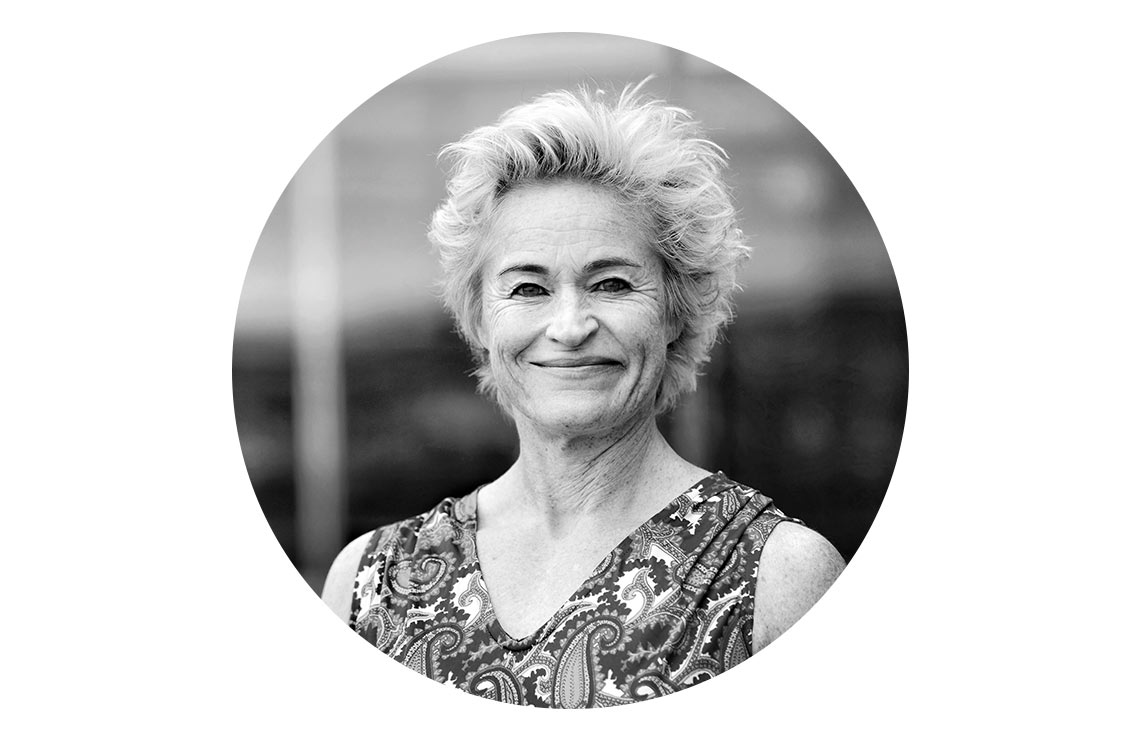
Britt Nilsen
Head of Sustainability
Years in Schibsted: 23
Let your team fail

Let your team fail
Leaders need to create an environment for exploration and experimentation – and set up teams for failure, says David Gill, CPO at Schibsted in Finland. This is how companies working with tech will survive.
Our users’ expectations and needs grow every day. What was a relevant solution yesterday can suddenly be considered outdated and ripe for disruption today. There is just one problem: across consumer technology companies, most of the improvements we put in front of our users are completely useless. Various internal benchmarks and academic studies show that even among the world’s strongest technology companies, many of the changes made to their products do not deliver value to users. As measured through user behaviour and metrics, most new functionality isn’t used and some even lead to lower user engagement. You have probably been in this situation yourself: your favourite app suddenly changes, introduces meaningless new features, or even messes up the navigation.
So, how do you avoid these well-intentioned but wasteful missed opportunities? How do we lower the risk of spending our time and energy building features that no user will ever use? And on the other hand, how can we speed up our ability to quickly identify the most pressing problem to be solved for our users, and determine the solution that best solves this problem?
We need to set up our teams for failure. They need to fail a lot, ideally many times a week. Why? Let’s remember the data: even the most user-centric, smart and well-equipped product teams will ship a lot of improvements that do not solve any relevant problem well enough. Only one out of four ideas will positively move the needle, at least in its first iteration. That means three out of four ideas should not have been built in the first place!
Since we do not have a magic crystal ball to know which three ideas will not work, we simply must test them out for ourselves. This means that the best teams in product development are the ones that work through and discard the bad ideas the quickest. The teams that creatively and efficiently spend the least time determining that a certain idea will fail to meet user needs, are the teams that ship the most meaningful improvements. As you might have guessed, failures and critical learnings are almost as important as finally shipping that one improvement that really moves the needle.
The right environment is crucial
For our leaders, this means providing the right environment for teams tasked to tackle this hard and time-consuming journey of exploration and experimentation. By studying some of the most successful technology companies in the world and reflecting on my own experiences, there are some key enablers that need to be in place for your teams to have the user-centric, strategically relevant impact of our dreams:
1. Focus on outcome
Set goals based on the outcomes you want to achieve, not the functionality you want to build. As tempting it might be for a leader to measure progress in tangible feature releases (we built something! I can see it on the app!), it’s incredibly important that the teams are instead empowered to achieve positive user and business outcomes as measured by metrics. This recognises the fact that the first idea/feature will probably not work, while also giving the team the freedom to decide on solutions while also boosting the responsibility of delivering results.
2. Open atmosphere
Psychological safety: many leaders know that a key trait of any successful team is the degree of psychological safety they feel when interacting with each other. This basically means having permission to speak your mind with your colleagues without any fear of repercussions or judgment. This is hard to establish, possibly even harder to achieve remotely, but it’s a critical foundation if you want your team to reap the benefits of being diverse and cross-functional.
3. Product discovery
Get really good at product discovery. Product discovery is the art and science of finding out which problems are most worth solving and whether the proposed solution will work. It’s a series of techniques ranging from user interviews, surveys, prototyping and design validation, technical feasibility, competitor benchmark and other types of experimentation. This requires both time, skills, empathy and patience. I have yet to see a company doing enough product discovery.
4. A clear strategy
Develop a clear vision and strategy. So, it’s super hard to figure out what to build. And it needs quite a bit of time-consuming product discovery. How do we avoid the pitfall of straying too far from the purpose and mission of the company? How do we avoid the teams coming up with all kinds of ideas that make the totality of your product look like Frankenstein’s monster? The answer is through serious strategic immersion between leaders and the team. It’s not enough to share a fancy slide in a company all-hands a few times a year. The strategy needs to be discussed, questioned and familiarised with everyone in the team until the strategic direction of the company is understood. And most importantly, it needs to be clear how each individual team will contribute to this strategy.
5. Time and focus
Give enough time and focus. We know that successful product development is high in complexity and low in predictability. The process is messy and requires both creativity and resilience. It also requires investment in learnings and development, and that the teams reflect often and deeply on how they can improve their ways of working together. This means that overworked or stretched teams will have a much harder time achieving this tough task. Ensuring that they have enough support and slack in their agendas is fundamental for their success.
Product development is a tricky business. It requires talented and motivated people, strong leadership, a curious company culture, sharp strategy, patience and a bit of luck. However, it can also breed team engagement, happy users and positive business outcomes. And you know what? Much of the above isn’t exclusive to product development. Almost all the work we do these days has the same high degree of complexity, which makes these five tips applicable to your entire organisation!
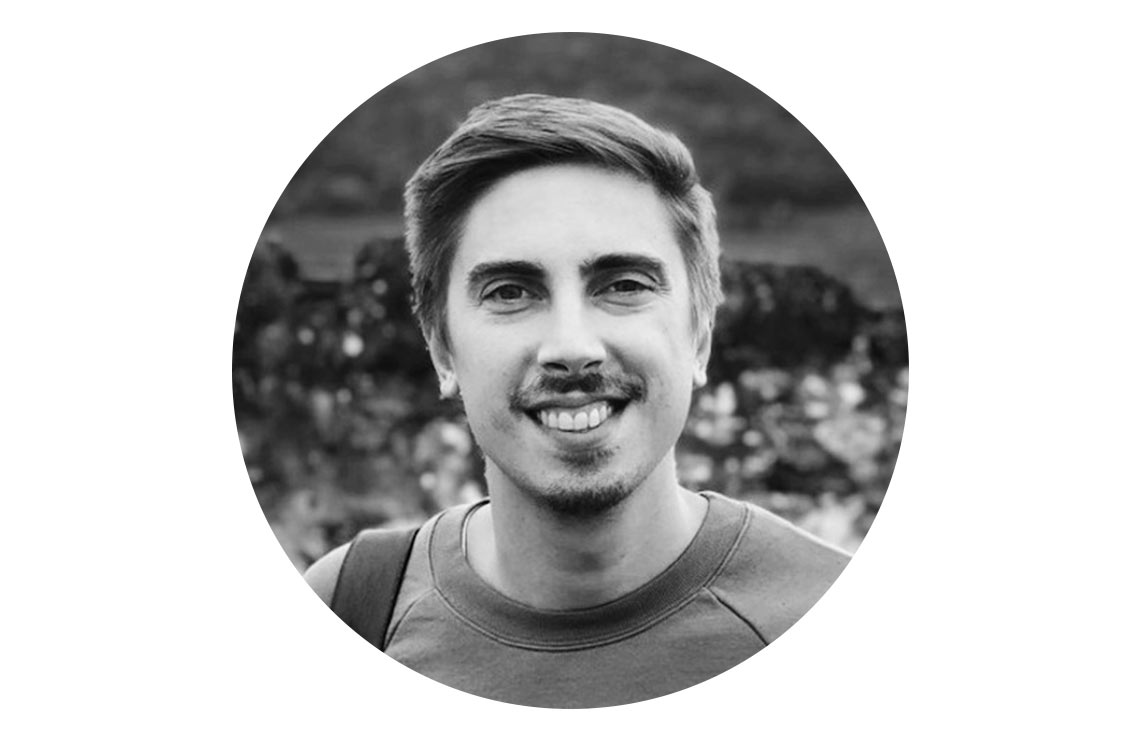
David Gill
Chief Product Officer, Schibsted Marketplaces Finland
Years in Schibsted: 10
3 Lessons We Can Learn from Orcs

3 Lessons We Can Learn from Orcs
When the futures we imagine confront our logic and business models – it might help to look at gaming
to break free from the gravity of the present.
The full moon hangs over the horizon, and a light rain begins to fall from heavy clouds. Your boots squelch in the mud as the pitter-patter of raindrops lulls you into a false sense of safety. A monstrous howl breaks the calm night, followed by several more, echoing from the forest around you. Whatever creatures lurk in the darkness have you and your companions surrounded. What do you do?
Over the last decade successful TV shows like Game of Thrones and Stranger Things, as well as live-streaming platforms like Twitch, have brought tabletop role playing games (TTRPGs) out of the basement and into the mainstream, as exemplified by the commercially successful Dungeons and Dragons which has developed a cult-like following.
Propelled by collaborative storytelling, TTRPGs share three characteristics. First, players take on the role of imagined characters, each with their own histories, motivations, strengths and weaknesses. Second, characters inhabit a fictional setting with its own internal logic, covering everything from medieval fantasy to space opera. Finally, these games use elements of chance and improvisation to resolve conflicts and create consequences of the characters’ actions.
Players often use their characters to explore parts of themselves or experience things to which they aren’t normally exposed. This can be an incredibly energising experience; imagine what it would feel like to actually save the world with your friends? Other times, this experience can be quite personal. In the game “14 Days”, players take on the role of someone living with severe migraines, and experience what the unpredictability of chronic pain means for them over the course of the two-week game. Simply using narrative and imagination can take us one step closer to empathy and experience.
What sets these games apart from their digital cousins is the near-complete freedom they offer. Not bound by the limitations of a script or computer program, the question “what do you do?” gives players the chance to take unconventional paths that they would otherwise miss. It builds a sense of agency and allows stories to unfold in emergent ways. Unconventional strategies can reward unique narrative turns.
In many games, this freedom is tempered by a Game Master (GM), who acts as referee of sorts, describing the context the characters are in, acting as any people they may meet in the world, and adjudicating the results when the outcome of the characters’ actions is uncertain. With multiple players making individual and collective decisions, the GM helps maintain the tone and direction of the narrative, providing believable consequences for the characters’ actions. Collaborative storytelling, meaningful cause and effect, and emergent plot twists are what makes these games unique.
While it has a very different goal, Strategic Foresight is a discipline that follows a very similar logic to TTRPGs. Used by leading companies and public institutions worldwide, including here at Schibsted by our Tech Experiments team, Strategic Foresight helps us imagine a range of possible futures and develop robust, forward-looking strategies in times of uncertainty. Like TTRPGs, it uses fictional, collaborative scenarios to explore different actions and imagine possible outcomes.
The process follows four core steps. First, we scan the present for signals of change, including market trends, news stories, and user behaviour. Second, we use these signals to identify trends affecting our organisation. Next, we extrapolate and create future scenarios, imagining our place in them. Finally, we identify and prioritise actions we can take today to move us towards our preferred future.
This can be a powerful approach to anticipating future trends, risks, and opportunities. It can also be an unsettling one. When the futures we imagine confront our logic and business models, how can we break ourselves free from the gravity of the present and imagine different paths going forward? This is where Strategic Foresight can draw lessons from TTRPGs.
Make it experimental
Part of what sets role-playing games apart from books, films or computer games is the feeling that you and your friends were actually there, living the story, even if it is fantastic and unbelievable. When working with Strategic Foresight, paradigm-shifting futures can be hard to believe; if we don’t have parallel experiences to draw on, how can we imagine what that future might feel like? This is where we can use design and storytelling to simulate those experiences. Building prototypes of future products and services that we can touch and experience can bridge the gap and make challenging futures more believable.
Make it divergent
Engaging stories are full of choice, conflict, failure and success. Role playing games embrace this and allow us to find opportunities we might have disregarded otherwise. In Strategic Foresight processes, it can be tempting to focus on the most preferable or probable future we identify. If we give ourselves the chance, these processes also provide low-investment, low-risk opportunities to explore novel paths and alternative strategies. This kind of divergent thinking helps challenge our approach to business-as-usual, adapt to unpredictable events and identify novel areas for exploration and investment.
Make it emergent
Collaborative storytelling means that no one at the table knows what will happen next. It builds excitement and a sense of ownership, and the collective choices of the players can lead to truly unpredictable twists. In parallel, one of the main challenges for Strategic Foresight is preparing organisations for unpredictable, so-called ‘Black Swan’ events, like global pandemics, as well as unforeseen areas of opportunity, like NFTs. To foster emergent thinking, Strategic Foresight processes should involve a diverse range of participants from across the organisation in a safe space for open discussion. Truly novel ideas can arise only when a mix of experiences, expertise and perspectives have a seat at the table and are given the chance to imagine together.

Christopher Pearsell-Ross
UX Designer
Years in Schibsted: 3 months
“I went from handicapped to cyborg”
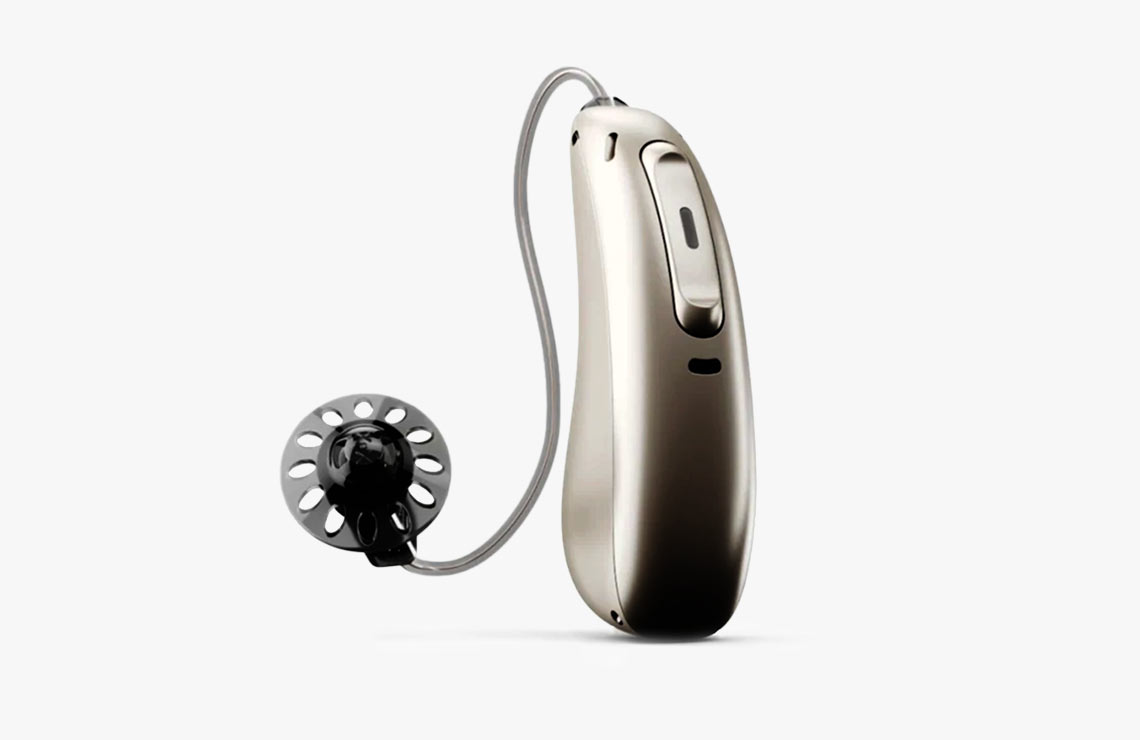
“I went from handicapped to cyborg”
Last fall I became a cyborg. Now, when I tap twice on my left ear, I answer a phone call or hang up. If I tap twice on my right ear, I activate Siri. My new hearing aids make me feel superpowered. Improving our senses and bodies will be the future for all of us, says Sven Størmer Thaulow.
As a kid I handled the fact that I was born with a reduced hearing by compensating with lip-reading and being seated in the first row in the classroom. Later, in the army and at university – exposed to the myriads of Norwegian accents and most likely some effects of playing in bands – it became more tiresome to compensate, so I started using hearing aids.
Until last fall it has been a varied experience. They serve as an important support, but they lack in refinement – and always make me acutely aware of my handicap. But then something happened. For years we´ve talked about cyborgs and wearables, while techies implanted RFID chips under their skin to demo the future and numerous smart glasses with AR have been tested. But now I’m convinced that it’s within the audio space that things will take off. Superpowered hearing aids will become consumer electronics – filling the missing link in the audio interface ecosystem.
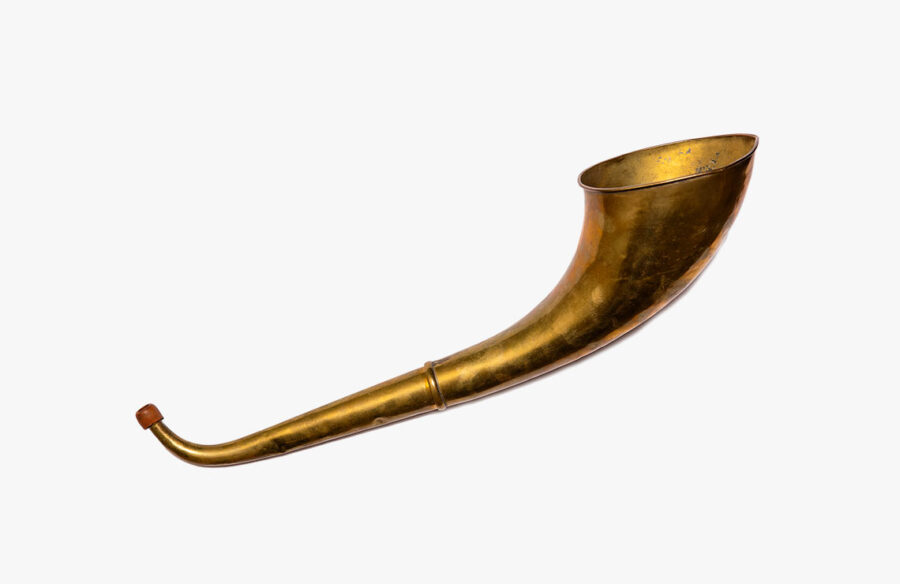
But the road to make me a cyborg has been long.
It all started with “in ear”-aids, devices that practically plugged my ears so that no natural sound could enter. In the mid-90s, I got the first programmable devices that could amplify sound on six different frequency bands. Then, in the early 2000s, came the tiny aids that hung behind my ear and that had a speaker connected by a fairly invisible chord. At that time, the buds stuck into my ear were full of holes, and amplification was much better, resulting in a more natural sound picture. These are still the default mode today. But all this time I still felt handicapped, and I didn’t like that they were visible – so I kept my hair long. Being a vocalist in a band was a good combination.
Around 2014, the first mobile connected hearing aid entered the scene. It was connected to the mobile through Bluetooth, not only in an app, but into the operating system IOS. The hearing aids worked like headphones and the voice audio was excellent – but they didn’t have a microphone. I had to hold up the phone to my mouth when speaking. You could also control different programs and the volume, either through an app or directly in the control centre on Iphone. I could also stream music from my Iphone – but the sound was optimised for voice, so it was treble-crap. But this started to become cool. So, I cut my hair.

Still, the potential was so much greater. When could I drop my airpods? Why weren’t the hearing aids truly connected two-ways so I could talk in them, talk to Siri, and get answers? I kept asking every year for innovations and I told my audiologist Heidi to call me when any great leaps were made on functionality.
Then came the breakthrough. Heidi called me in November 2020, asking me to come over. She handed me a hearing device called Phonak from the Swiss company Sonova Group. And now, after 15 years with hearing aids – I have officially become a cyborg. I don’t feel like I have a handicap anymore. I feel superpowered. Privileged. And I am sure this is the future for all humans.
I can use the aids as I do airpods when I talk on the phone. It’s almost a problem as people don’t have any visual cue that I am on a call. The audio quality is also close to the quality from airpods. I have now used these hearing aids for about twelve months, and I haven’t used my airpods at all. And I am listening to a lot of music.
But what’s probably the coolest thing about my new hearing aids is that they are gesture activated. If I tap twice on my left ear, I answer a phone call or hang up. If I tap twice on my right ear, I activate Siri and can ask whatever I want – hoping she will understand. I use it mostly for controlling Spotify, beefing up the volume, setting a timer, jotting down a to-do, sending a simple text message, etc. A few times I’ve asked questions like “who is xx”, but what you can do with this new audio interface is limited to the intelligence of Siri and not to the content or the value chain, which is super smooth.
For 17 of the 24 hours in a day, I am connected to the internet – inside my brain practically. It saves me loads of friction during the day; I probably pick up the phone 40–50 percent less. I don’t need to charge or look for my airpods either.

In my view, the true breakthrough of connected humans will come from medtech. And it starts here, with audio. And while I’m walking around with some fellow hearing-impaired cyborgs, waiting for my audiologist, Heidi, to reveal yet another breakthrough – here are some predictions about the soon-to-come future of the audio interface:
In five years from now you will be able to buy “Invisible Airpods” from Apple or equivalent. They will be the priciest Airpods you can get hold of, but way cheaper than my Phonaks (which are hovering around 1,400 USD in Norway).
“Invisible Airpods” will be the primary audio interface toward the internet. It’s always on you and it’s personal – so why bother with Google Home?
Siri will become a lot smarter and tailored towards “non-screen” communication. This means you won’t need to pick up your phone to browse through what Siri has found on the Internet when asking her a question. Just imagine you are about to have a meeting with someone and you’d like to get some information about them. Siri will be able to provide that, directly into your ear.
App providers will build in Siri support on loads of functions so that it’s possible to use functionality inside the apps without picking up the phone. Today there are very few apps that have implemented functions towards Siri, which is why “she” has limited reach on our phones.
I can’t wait for the next innovation in this space!

Sven Størmer Thaulow
EVP Chief Data and Technology Officer
Years in Schibsted: 2.5
An unprecedented moment in history

Kristin Skogen Lund, CEO Schibsted Media Group
An unprecedented moment in history
In 1839 Christian Schibsted started a small printing business. Two decades later, he founded the newspaper Aftenposten to branch out, which became Schibsted’s first example of rethinking its business.
Today, after 180 years of entrepreneurship, innovation and investments, Schibsted has grown into a family of strong brands ranging from media houses to online marketplaces, digital growth businesses, and start-up investors. We still carry with us both the values of our media heritage and that desire to branch out, go for growth, rethink and reinvent ourselves.
Our media heritage also inspires the Schibsted Future Report. This annual outlook on trends within tech, people and business is written by our own people and we truly believe that sharing ideas and being transparent is a foundation for democracy.
In the past year, our willingness to go for change and growth has given us the opportunity to consolidate the Nordic classifieds market, by acquiring the Danish classifieds marketplaces DBA and Bilbasen, and welcoming them into the Schibsted family. We believe this puts us in an even better position to deliver on our mission; to empower people in their daily lives.
we are witnessing two fundamental changes in the labour force
To keep growing, Schibsted (and everyone else) will have to deal with the fact that the world is at a crossroads. The digitalisation of society has taken leaps during the pandemic, and everyone is racing to build and maintain a digital relationship with their customers. To succeed, they will need developers, UX-experts, engineers and technologists. The problem is that there are too few to go around as it is.
According to Gartner’s Emerging Risks Survey 2021, global talent shortage is now the top emerging risk for all organisations. Korn Ferry estimates a worldwide deficit of 4.3 million tech-skilled workers by 2023, of which 1.5 million in Europe alone.
On top of that, studies carried out by Microsoft, among others, show that a high percentage of the workforce want the option of working remotely and are willing to change jobs to do so. What is more; remote job postings on Linkedin have increased five times since the pandemic outbreak.
In other words: we are witnessing two fundamental changes in the labour force simultaneously. First, a global shortage of tech people, which has already been named “the war for talent”. Second, a global talent migration in a border-free, post-pandemic labour market, often referred to as “the great reshuffle”.
However; one can compete on culture
There’s no easy way for employers to counter any of these fundamental changes. Competing on compensation and benefits alone, for instance, may prove to be difficult when the global giants have seemingly bottomless war chests in the war for talent. However; one can compete on culture – offering a better place to work, and one can compete on purpose – offering a more meaningful place to work.
I think we are facing an unprecedented moment in the history of work, where we all need to rethink not just how we work, but why we work. More people will be doing work they love at companies they feel passionate about. And this presents opportunities to organisations who engage their employees, offering trust and purpose.
I also think it is a good idea to showcase the talented people already working at the company, letting their ideas and voices be heard. And that is exactly what we do with the Schibsted Future report.

Kristin Skogen Lund CEO
Years in Schibsted: 3 as CEO and 6 as Commercial Director and CEO of Aftenposten 2004–2010
Crypto finance is going mainstream

Crypto finance is going mainstream
Cryptocurrencies have made decisive moves towards mainstream adoption in recent years. A May 2021 report by New York Digital Investment Group showed that 17 percent of American adults owned at least a fraction of Bitcoin. Among millennials, nearly half own some form of cryptocurrency.
Moving at a much slower pace behind buzzy cryptocurrencies such as Bitcoin and Dogecoin is the notion of decentralised finance (defi). Billed as finance for the internet age, it boils down to the notion that anyone in the world can lend, save, invest and borrow blockchain assets. Unlike today’s financial systems, defi is run on peer-to-peer networks where financial transactions take place through smart contracts – programs on the blockchain that only run when conditions between the buyer and the seller have been met. The users define the rules of engagement, not the institutions.
Anyone have access
The advantages of defi are numerous. Without institutions having the final word on financial transactions, anyone can access banking services. The same permissionless feature applies to the developers who build on these decentralised platforms. There’s also the added benefit of transparency, as software built on these decentralised networks is open-source, and transactions on the blockchain are recorded for all to see.
Furthermore, defi promises the benefit of 24/7 accessibility, unlike traditional financial institutions. Instead of subjecting their financial history to the whims of a bank manager, a defi user could use their Ethereum tokens (the crypto that powers many defi protocols) as collateral for the loan.
Global adoption of defi would have a disruptive effect on our current financial institutions
And rather than opening a savings account with a paltry interest rate, a user could stake certain coins, earning interest rewards far beyond those determined by central banks. By adding your tokens to the blockchain’s liquidity pool, you provide the capital to power other defi services. Many of today’s blockchains operate with these so-called Proof-of-Staking models, an environmentally friendlier alternative to Bitcoin’s Proof-of-Work framework. The user (and their crypto) help serve as the infrastructure.
Disruptive effect
Global adoption of defi would have a disruptive effect on our current financial institutions, reengineering everything we understand about costly financial services such as transfers and global remittances. Banks are particularly exposed to risk – even digital-savvy banks still largely operate by a traditional set of rules. Not surprisingly, some banks have begun commissioning analysis studies and stating that it’s “time to cooperate” with defi.
Defi still has a steep barrier to entry though. It requires a high level of internet savvy to understand. Another downside is the inherent volatility of many cryptocurrencies. The Ethereum tokens you stake on a pool, for example, could drop 20 percent in value over the course of a week (although the opposite is also true).
As I write this, Defi Pulse reports that there are 83 billion USD of assets locked up in defi protocols. Q1 2021 saw 1.5 trillion USD worth of transactions settled with Ethereum, an amount that the venture capital firm Andreesen Horowitz noted represents 50 percent of Visa’s payment volume. Given the sheer volume of capital involved, it’s a question of when, not if, defi will start to play a central role in how we handle our money.

Jeremy Cothran
Former Editor, Schibsted Daily
Years in Schibsted: 1.5
Credits 2021
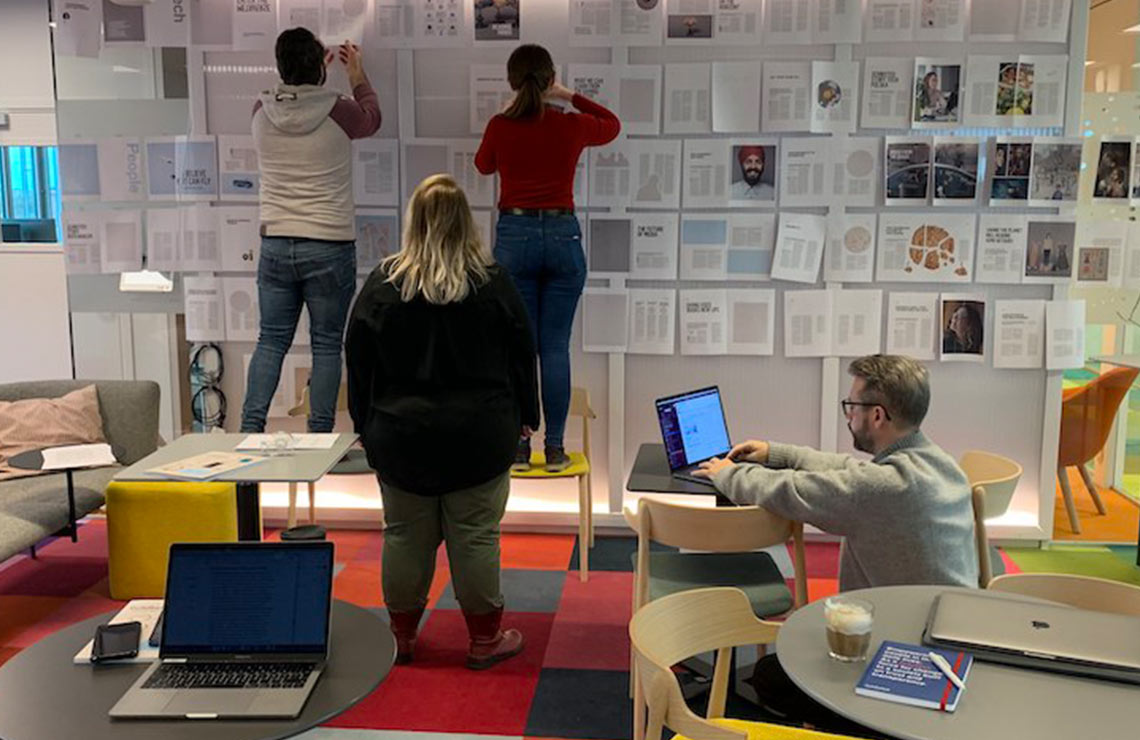
The Future Report team in Stockholm in action.
Future Report 2022 Credits
Produced by Schibsted Group Communication, Nov 2021.
Editor
Art Director
Photo Editor
Emma-Sofia Olsson
Page Design
David Stillberg
Text and editing
Images
Emma-Sofia Olsson, Andreas Lewandowski, Johan Lagerwall, David Stillberg, Thomas Molén, Martin Slottemo Lyngstad, Haakon Nordvik, Lars Pehrson, Malin Hoelstad, Carolina Byrmo, Martin Stenmark, Kyrre Lien, Andreas Bardell, Rune Sævig, Magnus Wennman, Stig B Hansen, Fereshteh Eslahi, Magnus Hjalmarson Neideman, Monica Strømdahl, Emil Wesolowski, Adobe Stock, Phonak.
Contributors
Kristin Skogen Lund, Andreas Cervenka, Camilla Buch, Sam Sundberg, Sven Størmer Thaulow, Jeremy Cothran, Christopher Pearsell-Ross, David Gill, John Einar Sandvand, Joacim Lund, Erica Treijs, Ann Axelsson, Britt Nilsen, Petter Larsson, Mette Krogsrud, Einar Hålien, Siv Juvik Tveitnes, Zuzanna Zygadlo-Stenberg, Anders Grimstad, Christian Horn Hanssen, Dan Ouchterlony, Linda Christine Strande, Hanne Hollstedt.
Social
Schibsted on Twitter
Schibsted on Instagram
schibsted.com
Göteborgstryckeriet
PAPER Arctic Matt and Munken Krystall
Credits

The Future Report team: Andreas Lewandowski, Ann Axelsson, Emma-Sofia Olsson, and David Stillberg.
Future Report 2021 Credits
Produced by Schibsted Group Communication, Nov 2020.
Editor
Art Director
Andreas Lewandowski
Photo Editor
Emma-Sofia Olsson
Page Design
David Stillberg
Translation
Lars Ryding
Brigid McCauley
Images
Paul S Amundsen, Andreas Brekke, Tor Høvik, Leena Koskela, Johan Lagerwall, Andreas Lewandowski, Øyvind Losnegard, Thomas Molén, Magnus Hjalmarson Neideman, Emma-Sofia Olsson, Tomas Oneborg, Caroline Roka, Line Slotnæs, Monica Strømdahl, Morten Uglum, Adobe Stock
Contributors
Kristin Skogen Lund, Sven Størmer Thaulow, Nicolai Skarsgård, Ragnhild J Buch, Mari Midtstigen, Agnes Stenbom, Joacim Lund, Sam Sundberg, Sophie Tsotridis, Dan Ouchterlony, Mette Krogsrud, Renate B Johnstone, Ebba Bonde, Rune Røsten, Markus Ahlberg, Tero Marjamäki, Marius Husebø-Evensen, Christian Printzell Halvorsen, Anne Sandvin, Anniken Ore Larssen, Jeremy Cothran, Lotta Wollentz, Ian Vännman, Hanne B Finstad, Hansine Korslien, Frøy Gudbrandsen, Niclas Bergström
Social
Schibsted on Twitter
Schibsted on Instagram
schibsted.com
Göteborgstryckeriet
PAPER Arctic Matt and Munken Krystall
Let the change be for the better
Kristin Skogen Lund, CEO Schibsted Media Group
Let the change be for the better
How do we look forward in the midst of a pandemic? Another question is how can we not?
We’ve passed the initial troubles of adjusting all our ways and routines to Covid-19. We’ve realized that this is a marathon rather than a sprint — and one we have to get through together. We have also realized that some things will never go back to the way they were, even in the long run. Now is a good time to reflect, try to look around the corner and see what’s ahead. Change is here anyway — why not use the momentum to make a change for the better?
The Schibsted Future Report is one way of looking around that corner. We see it as an opportunity to get new perspectives on trends and topics we find interesting. And never has it felt more important to share those perspectives with others. Conferences and large events are on pause, we don’t meet in person to workshop and to discuss, and even if we do connect in more digital ways than we could ever have imagined – we do connect less.
That’s why this year’s Future Report is accompanied by a series of open webinars with conversations and discussions. Watch out for more information on schibsted.com.
Covid and beyond
This year, a portion of the report is reserved Covid and its impact on society. We’re looking back through history to see the ways in which major crises have changed the world, how Covid has pushed digitalization and what new challenges leaders face because of it.
We also look beyond the pandemic to explore the next AI-challenges, what makes startups succeed, and how tech might be a gamechanger in farming.
Moreover, we explore how finding solutions to unpredictable challenges is a new mantra within sustainability as well. Experts believe a resilient mindset will help us invent solutions that enable us to cope with the challenges and even to create new opportunities.
Opportunity and legacy
“Opportunity” was certainly the key word when Schibsted, together with Adevinta, acquired eBay’s classifieds businesses this summer – creating the world’s largest digital marketplace company. Everything about the deal was done digitally and long distance. We weren’t sure we could make it happen, and we were certainly an underdog in the bidding rounds. In the end, we believe our legacy, culture and commitment to societal trust were factors making us attractive as buyers.
We’re proud to contribute to a society where trust is still valued. We also know not to take it for granted, and our news media are always looking for new ways to inform society through high quality and trustworthy journalism. Frøy Gudbrandsen, Editor-in-Chief of Bergens Tidende, thinks tomorrow’s news journalism should be based on nearness. News media need to have a deep understanding of what’s important in peoples’ lives, to be present where it happens, but also to be close to and understand customer behavior.
In times of crises, it is easy to see the importance of trusted and fact based news. It is also easy to see the need for boldness and change. In Schibsted, we want to keep making bold moves and keep being a force for change and empowerment in people’s lives. That is also why we believe in looking around the corner and sharing new perspectives.
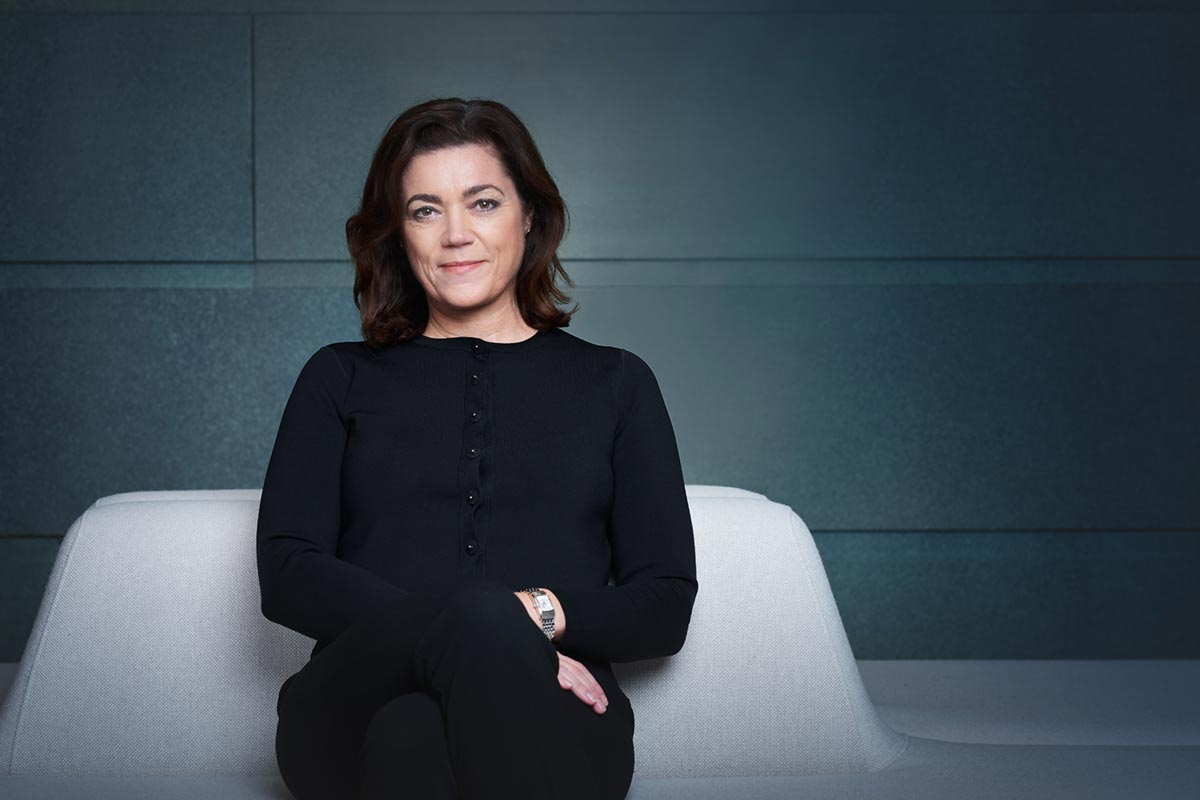
Kristin Skogen Lund
CEO
Years in Schibsted
2 as CEO, and 6 as Commercial Director and CEO of Aftenposten 2004–2010
What I’ve missed the most during the Corona crisis
Being able to visit my son who studies in Amsterdam
How crises disrupt and evolve society

How crises disrupt and evolve society
Evolutionary changes, wars, natural disasters – and now a virus – all change the world and society as we know it. Covid-19 has pushed digitalization forward in ways that previously were unforeseeable, and healthcare is one of the most affected sectors.
In 1347, the bacterium Yersinia pestis was carried along the Silk Road from Asia. An overpopulated Europe was already suffering from 50 years of famine. Ships carrying infected rats arrived in Genoa that year. In just four years, 40 percent of Europe’s population died from the pandemic that would become known as the Black Death.
Between 1290, when the famine began, and 1430, when the pandemic began to recede, Europe lost 75 percent of its population. The Black Death remains one of the greatest catastrophes in human history.
So why am I talking about the Black Death? As a disease, Covid-19 is not comparable: Yersinia pestis is a bacterium, Covid-19 is a virus. The mortality rate for Yersinia pestis was extremely high, while for Covid-19 it is much lower.
Nonetheless, they share a common feature: both were enormous shocks to the system for the global community. And shocks are also extreme catalysts of change.
History has shown how major crises change the world, initially for the worst, with poverty, disease and death, but then something new often emerges. Out of new knowledge and discoveries, new needs and behaviors, and new opportunities that arise, society is compelled to develop and to find new solutions, to chart out a new course.
The world wars not only redrew the world map; they also brought about fundamental changes in society. Political regimes fell and new ones emerged. A colonial world order was supplanted by two superpowers and a cold war, but also by international treaties and organizations such as the UN and the EU, and financial support packages that led industry to change course and prepare to innovate.
Natural disasters have wiped out entire species and then paved the way for new ones. On a smaller scale, they have also led to innovations such as earthquake-proof buildings, flood defences and improved aid efforts.
And pandemics like the Black Death and Covid-19 have led to new insights and knowledge in medicine and healthcare.
An Exponential digitalization
But Covid-19 will also leave a more lasting imprint on history. The virus has paved the way for exponential digitalization. E-commerce and home delivery of goods ordered online have exploded. We have learned to work and learn digitally. We socialize via monitors and games.
Lockdowns and isolation have most likely accelerated the rate of digitalization in many industries, too. When suppliers of parts and components stopped production, the benefit of fully automated processes became obvious.
Not least, the health services and healthcare sector has been profoundly affected, having undergone fundamental change. Just as during the Black Death, new technology has either contributed to, or resulted from, the current situation.
Prior to the Black Death, the role of medical science was led by the Church. The physicians were monks with close religious ties, who received their training at monastic schools in the largest countries or city-states. Like the Church, medical science was extremely conservative. The Black Death changed both medical practices and training. For example, treatments such as blood-letting and poultices of goat dung proved utterly ineffective in curing diseases. Slowly but surely, practices based on experience influenced medical training. Instead of cramming patients together, patient groups were kept separate from each other, goat dung was replaced with oils, healing was aided by fresh air, and different types of masks were used to treat patients.
Some parts of the healthcare service have suffered from an almost Luddite view of technology.
During the Covid-19 pandemic, the health sector has also suffered a shock, and many measures have been implemented to prevent it from collapsing altogether. However, this shock has accelerated the rate of digitalization. This sector is already one of the most high-tech sectors we have; apart from modern weapons systems, medical and technical equipment is among the most advanced and most expensive there is. But some parts of the healthcare service have suffered from an almost Luddite view of technology. A one-sided focus on security and privacy in particular has hindered digitalization. Compared with most other sectors, the level of friction for staff and patients has been and remains alarming.
Take hospitals as an example. Until the Covid-19 shock, staff at Oslo University Hospital were not allowed to use Skype to communicate with each other or with practices outside the hospital. The first surge of the virus marked the first time that health personnel were allowed to run applications on their home computers, where they could, for example, view live-streamed lung examinations of Covid-19 patients and advise on-duty personnel on how to improve the situation for their patients. This demonstrates that thorough assessments were made between benefit and risk to allow for pragmatic solutions to be used in these exceptional times. And it took a virus to make it happen.
As recently as February this year, for example, the Norwegian company Confrere was struggling to get general practitioners in Norway to start using video consultations. Apart from companies like Kry and Hjemmelegene, general practitioners have little competition to deal with. Despite patient demand, there was little motivation for change. When the Covid-19 virus broke out in the Nordic region, the use of video consultations exploded, and any self-respecting general practitioner now provides this service. It’s better for the patients. Better for the doctors. Better for the private sector. And it took a virus to make it happen.
Rapid change
Finally I would highlight the process of testing and getting test results. I myself was tested for Covid-19 in February 2020. Everything was done manually, the information was chaotic, but we did get the test results relatively fast because we were among the first to be tested in Norway. In July, our children were tested again, and this time the entire process was completely automated! And this happened rapidly – not only in terms of technology, but also in terms of regulatory amendments, which can often take years. Now all laboratories submit their test results to Emsis, a national database which can be accessed by patients and healthcare personnel alike via the patient’s core medical records available at helsenorge.no. So remember – before the outbreak of the Covid-19, Norway had no national infrastructure for test results! All it took was a shock and a few months to fix it. And it took a virus to make it happen.
Last but not least, I want to mention the coronavirus tracing app in Norway. Attempts by national authorities to implement virus tracing using mobile phones have been contested in many countries. Nonetheless, the Covid-19 virus has proven the necessity to grant ”some” access to highly sensitive personal data and often biometric data, and at rapid speeds. If we view this in connection with the critical need to make patients’ medical records, case summaries and test results digitally accessible, we can easily subscribe to Yuval Noah Harari’s analysis: ”The corona-virus pandemic could prove to be a watershed event in terms of enabling greater surveillance of society. People could look back in 100 years and identify the corona-virus epidemic as the moment when a new regime of surveillance took over, especially surveillance under the skin which I think is maybe the most important development of the 21st Century, is this ability to hack human beings.” Assuming that this capacity is used properly in terms of privacy and security, I believe that the extent to which it will prove to be good for society and for individuals is difficult for us to envisage today. And it took a virus to make it happen.
Now that we – hopefully – will return to normality during 2021 and 2022, it is vital that society, exemplified here by the healthcare services, does not revert to the old normal and reverse the digital quantum leaps that were brought about by the shock the Covid-19 pandemic caused. Those nations and companies that manage to seize the opportunities that have emerged will be the winners.

Sven Størmer Thaulow
EVP Chief Data and Technology Officer
Years in Schibsted
1,5
What I’ve missed the most during the Corona crisis
The informal chats at work!
Finn changed the history of Schibsted

Finn changed the history of Schibsted
Creating the Norwegian marketplace Finn was a milestone in Schibsted’s history. The idea challenged the existing businesses within the newspapers – but it turned out to be an international success story.
In the late 1990s the advertising revenue of newspapers crashed. Data and the internet were here to stay, and paper ads were no longer what they once were. The newspapers had to do something. Five major Schibsted newspapers in Norway put their best people on the job to find a solution that would secure revenue from classified ads in the future. The solution was – a web site with pictures of the newspaper ads! (vis@visen can be translated to: Show the newsp@pers).
The ads were not searchable, so it was really just the old newspaper ads on a screen instead of on paper. It was not a success.
But the owners did not give up, they realized that they needed a different approach. The ads had to be digitized, and it had to happen quickly. There were several competitors who had already launched digital solutions, so it was not about being first anymore. It was about being the best.
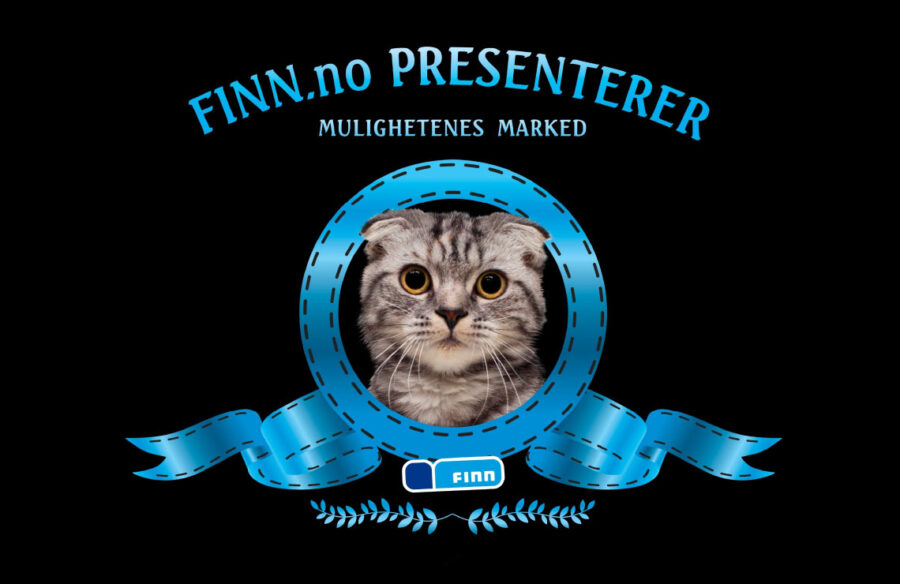
Terje Seljeseth, IT manager at Aftenposten, was given the task. He gathered a small team that gave the new service the name Finn. Finn was formally established as a separate company in 1999, but officially launched in March 2000, with great fanfare in central Oslo. Remember that this was early in the age of the internet – so many people shook their heads, and there was even a public debate about the future of the internet at the University of Oslo!
A lot of those who worked in the newspapers were skeptical and feared that the newspapers’ investments in internet advertisements would make them unemployed. Many also had little faith in the internet in general.
But the founders decided to hire people who were specialists in real estate, jobs and cars, along with highly competent people from the IT industry.
The mantra was ”We are all sales people. Launch and learn. Embrace change”. These keywords are still used and are a strong base for the internal culture.
Thinking differently
I worked in the advertising department at Aftenposten, and was employed in Finn in August 2000 to take care of the customers. There were only 10–15 people in the entire company, so everyone had to contribute.
We knew that in order to succeed, we had to do better than our competitors, and think differently than the newspapers. For example, we wanted the real estate ads to have many nice photos. But almost no one had cameras that could take digital photos. Therefore, digital cameras were purchased, we gave them to our customers, and we taught them how to use them.
We spent a lot of time teaching people to post their ad themselves, and we also received photos that we scanned and posted on the ads. On several occasions we traveled to our most valuable customers and sat down with them to teach them to be self-sufficient.
Not all of the customers were equally enthusiastic.
Real estate agents and car dealers were afraid to lose market share and did not want private individuals to be allowed to place ads. Fortunately, no one listened to them!
Finn quickly became popular and grew at the same time as most people got a PC and internet at home, so the timing was perfect.
Finn has done well, even during economic downturns, it has grown steadily. In bad times people sell houses and cars, and in good times they switch more often – and in both cases there is a need for ads.
Already after three to four years the company was making good money. In 2003, Torget (general merchandise) was launched, and in 2006 came Reise, the travel vertical.
In 2006, Finn had 548,332 ads on Torget, in 2019 there were more than nine million new ads, and we expect to reach ten million in 2020. We had cake for every million new page views. For a time, we ate cake every week, and we had to buy fruit and vitamins to balance our diet. I still blame those celebrations for all my extra pounds.
The focus has always been on the users’ experience
For me and my team at customer support, the focus has always been on the users’ experience. All feedback is taken seriously, and the teams are doing their part to continuously improve the user experience.
Finn’s marketing strategy has always been to be very down to earth, with a twinkle in the eye – and customer support are using the same tone of voice. Since Schibsted also had newspapers in Sweden it was important to secure that market too. So, in 2003 Schibsted bought Blocket, which then became a template for the group’s future classifieds websites. Schibsted was one of the first players to follow a global online classifieds strategy and made an impressive international expansion. In early 2019, the company owned classified marketplaces in more than 20 countries.
In May 2019, it was announced that Schibsted had spun off the international marketplaces into a new company – Adevinta. Today we know that the split has led to even more marketplaces worldwide, and so far it has peaked with the purchase of eBay’s classified sites in summer 2020. Finn is now a part of Nordic Marketplaces in Schibsted, along with Blocket in Sweden, and Tori and Oikotie in Finland.
So, in a sense Finn was the beginning of an incredible journey for the company itself, for Schibsted, but also for society. The services provided by all these sites also help people to make sustainable choices, since trading second-hand goods is a part of a circular economy and reduces our environmental footprint.
Innovation and growth is key
Since Finn was an innovation in itself, innovation lies in the company’s genes, and experimentation is a part of everyday life. Much has changed over the years, some marketplaces have come and gone, some have been successful, and some have failed. The old mantra ”Launch and Learn” is still in the walls.
Usability is another keyword. All feedback from users and customers is constantly used to continuously improve the experience. Today, almost 30 people work with user experience and service design.
The cultural values ”Sult, Humør, Takhøyde, Presisjon” (Drive, Spirit, Tolerance, Precision) have been there all the way, and by living these values both internally and externally, Finn has a unique and strong culture. It is also one of the most known brands in Norway.
As in all other industries, Finn must also change over time as both technology and users’ expectations are changing. We’re now starting the journey to become the next generation marketplace, and we will always continue to help people make smart choices for themselves and society. And we will never stop focusing on innovation and growth.
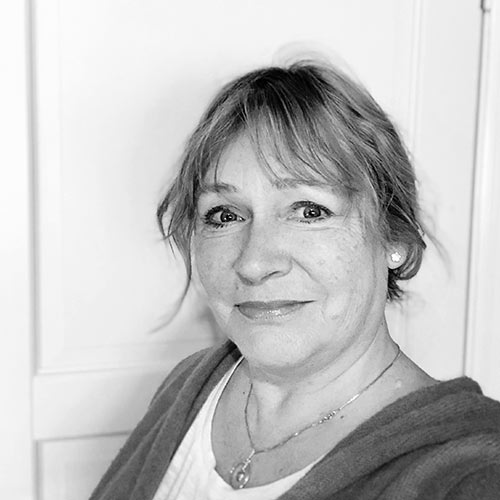
Anne Sandvin
Internal Communication, Finn
Years in Schibsted
22
What I’ve missed the most during the Corona crisis
Social interaction with my colleagues
An inspiring experience will attract Gen Z
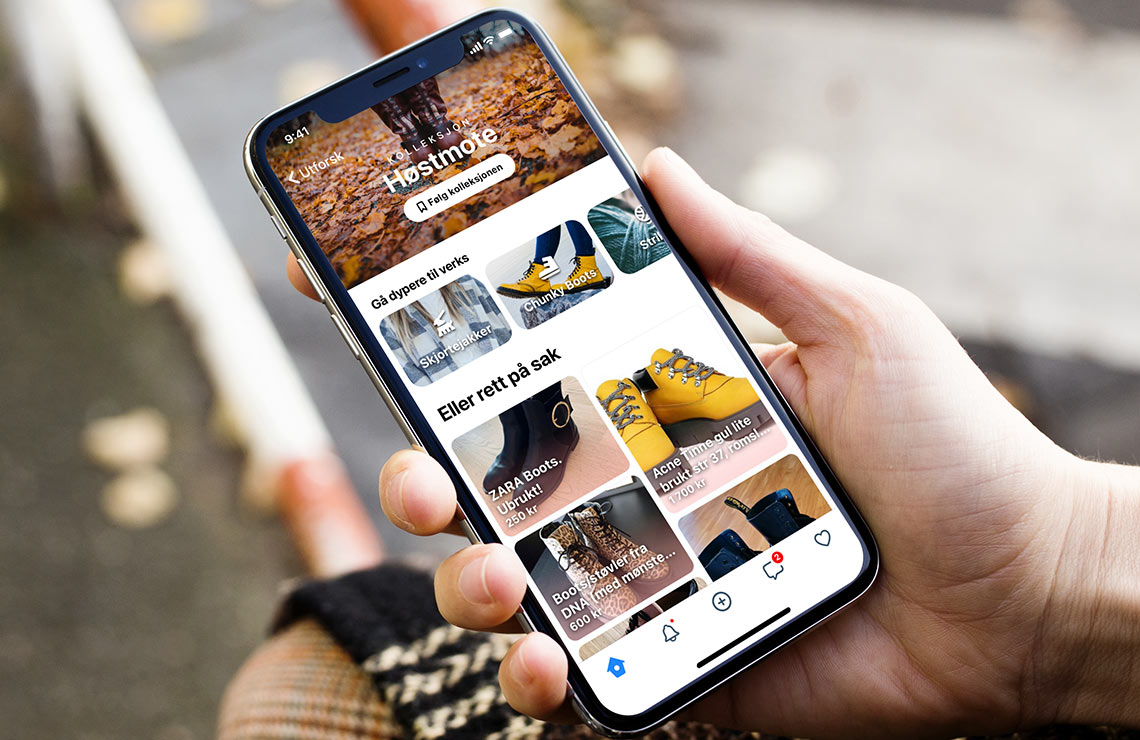
An inspiring experience will attract Gen Z
Gen Z are accustomed to defining their own tastes, trends, and values. Most of their screen time is spent inside the big social media apps, where new shopping habits, ways of learning, and trends are emerging. Anniken Ore Larssen is part of a team that is investigating how Finn can meet their needs.
Since January 2020, I’ve been working with a small team at Finn to create a new marketplace experience tailored to the needs of Gen Z. With this we hope to meet Gen Z’s need for inspiration, creativity, and speed. The result is a separate app, launched as an open beta this fall, which gives us the opportunity to iterate and learn fast without annoying Finn’s usual users.
And there is a lot to learn.
As a 28-year old having researched Gen Z for more than a year, I have only one conclusion: I’m feeling old. If I was asked to describe them with just one word it would be impatient. Everything seems to move a bit faster with this generation.
The fact that they have grown up with everything digital, social, and app-based has radically increased the pace of scrolling, liking and sharing. I encourage you to observe this next time you sit next to a teenager on the bus.
High expectations
Being online ”almost constantly” has not only led to a completely different way of navigating, it has raised Gen Z’s expectations of digital services. This also changes their relationships to peers, brands, and influencers. While it is said that Gen Z’s attention span is only 8.3 seconds (down from 12 for millennials), they are good at filtering out what’s important information. They quickly make decisions about what and whom get their attention and time.
Gen Z also has a different way of expressing themselves versus previous generations. With the rise of stories, snaps and six-second Tik Tok videos, things are moving faster. Not only does the aesthetic seem rawer, as we can see in clothing (think Billie Eilish), and photo editing (or lack thereof), also their message has an impatient, rebellious vibe.
They are vocal about their values, the labels they want you to use, and they will call you out if you do something that doesn’t match their expectations.
You might know the creative sides of Gen Z best through memes, snap filters, and Tik Tok videos. Snapchat even names them the generation of super-creatives, and their own research shows that more than half of respondents engage in what we would call creative activities both online and offline (drawing, making music, taking photos, sowing and redesigning). They are constantly on the lookout for new inspiration and new things to learn.
Self-expression is taken to the next level by launching fashion brands on Instagram, enabled by simple, no-code tools such as Shopify and Wix. It has made it possible for Gen Z to act on trends and to influence what’s cool in completely new ways. We can see it in an array of side hustles and smaller entrepreneurial efforts. As quoted by a Gen Z representative in a video by i-D magazine: ”Everyone has a t-shirt brand nowadays”.
I can imagine that Gen Z’s impatience and creativity will be visible in the job market in a few years, for instance by working several jobs simultaneously. Some will do this for a predictable income, while others will do it to fulfill their creative needs, applying this DIY (do it yourself) mentality to their careers as well.
Finding the best deal
Where consumption habits of previous generations might have been more or less dictated by advertising, Gen Z researches several sources to find the best deal. They consult friends, youtubers, and reviews before making a buying decision that is supported both by their wallet and their values.
Big corporations are trying to capitalize on this, such as through influencer marketing. But more importantly, platforms that were previously meant for inspiration only, are now gradually claiming a larger part of the buying journey. The best example of this is Instagram. I’m sure you’ve seen the white dots on some images, showing price tags when you click on them, or the new shops tab in the explore feed.
So, what are we going to do with all this information about Gen Z? In Schibsted, most of our brands grew up over the last 20 years – just like Gen Z. But it seems that this generation’s expectations are outgrowing us. With all this impatience and all this speed, can we, as a big organization, continue to develop products at our usual pace? This is why we started the Finn project and why we made it into a fast-paced process of testing hypotheses with real users during every two-week sprint. Our main idea is that Finn needs to make a similar journey to what Instagram has made – but the other way around. As just mentioned, Instagram is moving towards transaction. We believe that Finn, which has been a place purely for buying and selling, needs to move towards inspiration.
Therefore, we are looking at ways to combine editorial and marketplace content for a new and inspiring experience. We hope that user behaviour will change from using Finn only when you need something specific, to opening the app just to check what’s new, to be able to discover something you like. We want to make it quick and intuitive to find what you’re looking for and learn how to make sustainable choices.
I’m not going to claim we have found the solution to Gen Z’s needs yet. I believe it is a continuous process of testing and evolving, just like they do.

Anniken Ore Larssen
Product Manager
Years in Schibsted
3
What I’ve missed the most during the Corona crisis
Hugging my grandparents

